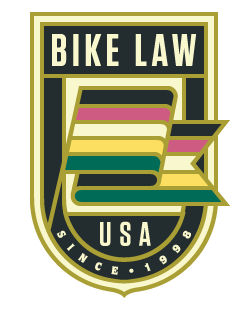Cycling in Virginia stands at a crossroads, literally and figuratively, with two transcontinental bike routes (#76 and #1) intersecting just north of Richmond. New trails, like the Virginia Capital Trail, from Richmond to Williamsburg, are nearing completion and new bike-friendly laws are on the books. Yet Virginia bike laws remain one of the last set of state laws clinging to the antiquated contributory negligence rule and old auto-centric attitudes remain pervasive in state and local governments and the Virginia DOT. The advocacy community is growing in numbers and in influence and ultimately will prevail.
It’s important to know your legal rights (and duties) when bicycling in Virginia. It is especially important after a bicycle accident (we call them bicycle “crashes” and explain why here).
For any questions about the State’s bike laws, or about your rights to the road, contact attorney Timmy Finch directly.
Right to the Road
- Virginia bicyclists generally have the same rights, and same duties, as drivers of motor vehicles.
Prohibitions
- Clinging to motor vehicles while biking is not permitted.
- Bicycles may only carry the number of persons for which it is designed.
- Cyclists may not carry any items which prevent them from keeping at least one hand on the handlebars
- Virginia law prohibits the wearing of headsets or earphones on both ears while riding
Helmets
- Required by local ordinance for any operator or passenger 14 years of age or younger in Alexandria, Arlington Co., Fairfax Co. Falls Church, Vienna, and other jurisdictions.
Alcohol
- Virginia’s DWI statute does not apply to bicyclists.
Where to Ride
- When in travel lanes, bicyclists must ride with the flow of traffic as closely as practicable to the right side of the roadway.
- Full lane use allowed when traveling at the normal speed of traffic, passing, preparing for a turn, avoiding hazards, traveling in a lane too narrow to share and avoiding a mandatory turn lane.
Sidewalks
- Sidewalk riding is permitted except where prohibited by local ordinances but bicyclists riding on a sidewalk must yield the right of way to pedestrians and give an audible signal before passing a pedestrian.
Bike Lanes, Bike Paths and Multi-Use Paths
- Mandatory use of bike lanes is not required.
Stop Signs and Traffic Control Devices
- Bicyclists are required to come to a full and complete stop at all stop signs and traffic lights displaying a red signal.
Signaling
- Cyclists must give the proper signals that are visible to other bicyclists and cars when turning or stopping.




